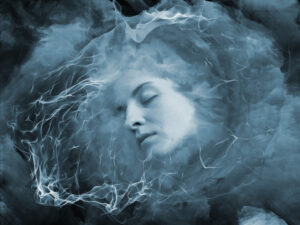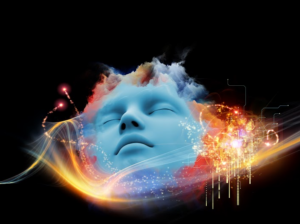Jungian Analysis is far more than dream interpretation. Many people believe that dreams offer insight into our inner selves that we may otherwise be unaware of. Dreams are typically expressed in the mythopoetic language of the psyche.
It is said that dreams are symbolic expressions of the deep meaning, needs, and desires of the Self. The most insignificant dreams can often provide the most valuable insight. A single dream can express several truths at once, and can refer to several aspects of our lives through the same images or symbols.
Step One: Associations
 Associations are the personal experiences an individual associates with a particular symbol or dream image.
Associations are the personal experiences an individual associates with a particular symbol or dream image.
Often people will say this means that, or I dreamt this because XYZ happened during the day.
This may sometimes be true. But it is not always true. It is important to look at the associations you have to any symbol or image in order to obtain its meaning in the context of your dream.
Step Two: Amplification
Amplifications are communally agreed upon characteristics of images, objects, people and animals. You could say that these associations are based upon shared human experiences expressed through books, films, science, religion, mythology and  fairy tales. Symbols are images or representations from the unconscious that are not completely understood.
fairy tales. Symbols are images or representations from the unconscious that are not completely understood.
The work of dream analysis is to derive as much meaning from a symbol as one can. For example, if you dream of a dog guarding a tunnel. What do you see? Is it a friendly dog? Is it a dog you know? How does it make you feel? How does it associate with you?
The dog could symbolize anything from Cerberus a mythological guard of the underworld, to a road block you may be experiencing in your own life.
If the meaning of the symbol is not clear after looking at personal associations, then further amplification may be helpful. This amplification can be accomplished by researching the attributes and characteristics of dogs on the internet, in books, encyclopedia or symbol dictionaries.
Step Three: Derive The Context
The context of a dream refers to the circumstances in which the dream occurs. Is your dream related to something going on in your outer life? Sometimes there is no obvious relation between a dream’s context and our lives. This often means that the dream refers to something that is going on in one’s inner life.
Step Four: Uncover The Setting
The setting in which your dream takes place is extremely important in uncovering meaning and understanding. It doesn’t matter if the setting of your dream is unknown, it can still provide clues to the meaning.
For example, if the dream is set in a home from your past, the content of the dream may have to do with what was experienced at the time when you lived in that home from your past.
A dream in a work setting may have to do with work life. Of course, none of this is necessarily so – such ideas are suggestions as to where to look.
Step Five: Define The Structure
Dreams are typically structured like stories. They have a beginning, middle, and an end. It may be helpful to look at the dream to discover the structural elements of the story presented by your psyche.
– What is the initial situation of the dream?
– What develops or changes in the dream?
– From the initial situation how does the story develop? What changes occur?
 – What is the action in the dream?
– What is the action in the dream?
– What is the climax of the dream? Often at the climax there is a fundamental change in the situation. Something is born, dies, is understood, or even changes in a small way.
– How does the dream end?
– Has the situation changed from the beginning of the dream?
– How are things left?
Often we will only retain a dream fragment. These can still be valuable clues that are worth recording and bringing to analysis.
Step Six: Study The Characters
Dreams typically will have one or more characters, who can be looked at like the characters of a book, play or film.
Protagonist: Who is the main actor in the dream?
Antagonists: Who are the other actors in the dream? What role(s) do they play? What qualities do they have?
Animals: Note any particular characteristics of the animal in the dream, including its size, color and emotional disposition. Then look at your associations to the animal.
Fantastic: Sometimes in dreams, animals will talk or take or other unusual characteristics. Sometimes objects that are inanimate in the everyday world will take on a life of their own.
Consider why the psyche provided this particular image, and how this fantastical characteristic creates a unique quality to the dream image.
Step Seven: Reveal Emotional Content
Dreams will often come with a particular mood, ranging from frightening to pleasant. The mood or feeling may shift from the beginning to the end of a dream. All emotions or feelings, and moods associated with a dream are very important to note. Follow these seven steps to analyze your dreams and uncover what your unconscious mind it trying to tell you.
Sources:
http://www.jungiananalysts.com/wp/?page_id=37

